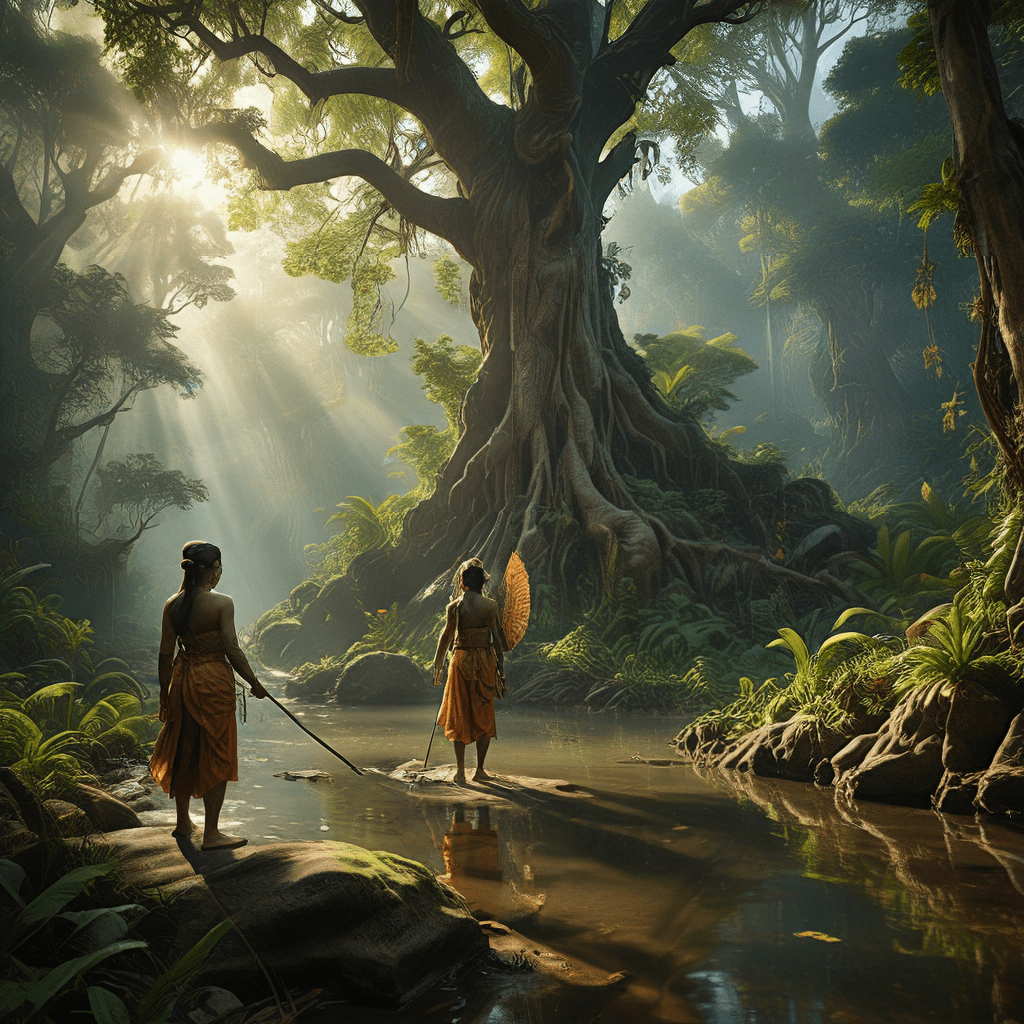The Divine Blueprint: What Ancient Myths Reveal About Our Origins
1. Introduction to the Concept of Myths and Origins
Myths are traditional stories that hold profound significance in human culture, often explaining the unexplainable, such as the origins of the universe, humanity, and the moral fabric of society. They serve not only as entertainment but also as foundational narratives that shape our understanding of existence, identity, and the cosmos.
Throughout history, myths have provided a lens through which different cultures interpret their origins. They encapsulate the values, beliefs, and experiences of civilizations, reflecting how societies view their place in the universe and the forces that govern them.
2. The Role of Creation Myths Across Cultures
Creation myths are a common thread woven through the fabric of human history, differing vastly yet sharing core similarities across civilizations. Below is a comparative analysis of creation myths from various cultures:
- Mesopotamian Mythology: The Enuma Elish narrates the story of Marduk, who creates the world from the body of the slain goddess Tiamat, symbolizing the triumph of order over chaos.
- Egyptian Mythology: The creation myth of Atum depicts the god emerging from the watery chaos of Nun, creating the first gods and the world through his thoughts and actions.
- Indian Mythology: The Rigveda describes the cosmic sacrifice of Purusha, the primordial being, whose body parts created the universe and all living beings.
Common themes in these myths include the struggle between chaos and order, the emergence of life from non-being, and the divine as a source of creation. Such motifs highlight the universal human quest for understanding our beginnings.
3. The Influence of Geography on Mythological Narratives
Geography plays a crucial role in shaping the narratives of creation myths, as environmental factors often influence the stories told by different cultures. For instance:
- Rivers: Civilizations like Mesopotamia and Egypt centered their myths around rivers, which were sources of life and sustenance.
- Mountains: In many cultures, mountains are seen as sacred, often viewed as the dwelling places of gods, influencing creation narratives that reflect a sense of stability and permanence.
- The Cosmos: Cosmological elements such as stars and constellations frequently appear in myths, suggesting a connection between the heavens and human existence.
These case studies illustrate how environmental features not only provide resources but also shape the spiritual and mythological frameworks of societies.
4. Divine Beings and Their Symbolism in Creation Stories
Creation myths often feature a pantheon of gods and goddesses, each embodying specific attributes and qualities that reflect human nature and societal values. For example:
- Chaos Gods: Deities like Tiamat represent chaos and disorder, illustrating the fears and uncertainties of early human societies.
- Orderly Creators: Gods like Marduk symbolize the establishment of order, reflecting humanity’s desire for stability and understanding.
- Fertility Deities: Goddesses associated with fertility and agriculture, such as Inanna, highlight the importance of sustenance and the nurturing aspects of creation.
These divine beings not only serve as creators but also as mirrors of human aspirations, fears, and societal norms.
5. The Concept of the Cosmic Order: Chaos vs. Creation
Many ancient myths explore the dualism of chaos and creation, portraying a universe that must be ordered from a primordial state of disorder. This concept is fundamental in understanding how various cultures perceive their cosmological narratives.
For example, in the Babylonian Enuma Elish, the chaotic waters are subdued by Marduk, who then creates the world, establishing a cosmic order. Similarly, in Greek mythology, the emergence of Gaia from Chaos represents the beginning of an ordered world.
These examples show how myths resolve chaos, establishing a framework for understanding existence and the human condition.
6. Myths as Reflections of Early Human Society and Values
Creation myths are not just tales of origins; they are reflections of the social structures, values, and beliefs of ancient societies. They often mirror:
- Gender Roles: Many myths emphasize the roles of male and female deities, illustrating societal views on gender.
- Agriculture: Myths related to the earth and fertility highlight the importance of agriculture in sustaining communities.
- Technological Progress: Some myths depict the invention of tools or fire, symbolizing human ingenuity and the quest for survival.
Thus, these narratives serve as cultural archives, preserving and transmitting the values of societies across generations.
7. The Psychological and Philosophical Interpretations of Myths
From a psychological perspective, myths can be understood through Jungian archetypes, which are universal symbols that resonate with the collective unconscious. These archetypes often appear in creation myths, representing fundamental human experiences and emotions.
Philosophically, myths raise profound questions about existence, purpose, and human identity. They prompt reflection on our origins and the nature of reality, inviting us to explore the deeper meanings behind our existence.
8. The Evolution of Myths: Historical Context and Adaptation
Myths are not static; they evolve over time in response to cultural changes and historical events. For instance, as societies encounter new challenges, their myths adapt to reflect contemporary values and beliefs.
Historical events, such as wars, migrations, and technological advancements, can lead to the reinterpretation of ancient myths, allowing them to remain relevant in changing contexts.
9. Modern Resonance: What Ancient Myths Teach Us Today
In today’s world, ancient creation myths continue to resonate within contemporary discussions of science, spirituality, and human origins. These narratives can inform our understanding of identity, community, and the human experience.
Moreover, they encourage a dialogue between ancient wisdom and modern knowledge, providing insights into our ongoing quest for meaning and understanding.
10. Conclusion: The Enduring Legacy of Myths in Understanding Our Origins
In conclusion, the examination of ancient myths offers profound insights into the human condition, revealing our deep-seated quest for understanding our origins. These narratives not only shape our cultural identities but also reflect the values and beliefs of the societies that created them.
Preserving these myths is essential for future generations, as they hold the keys to understanding not just where we come from, but also who we are as a species navigating the complexities of existence.




